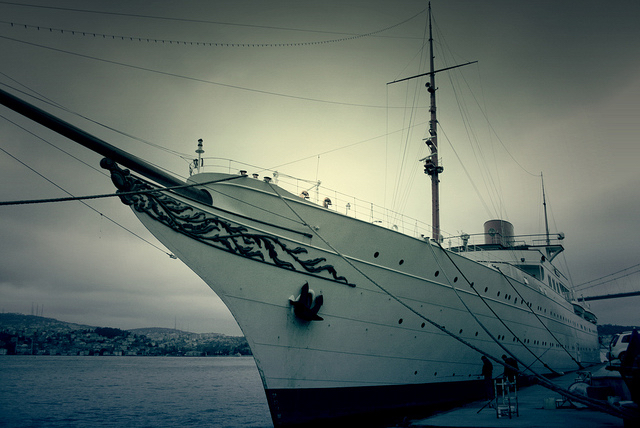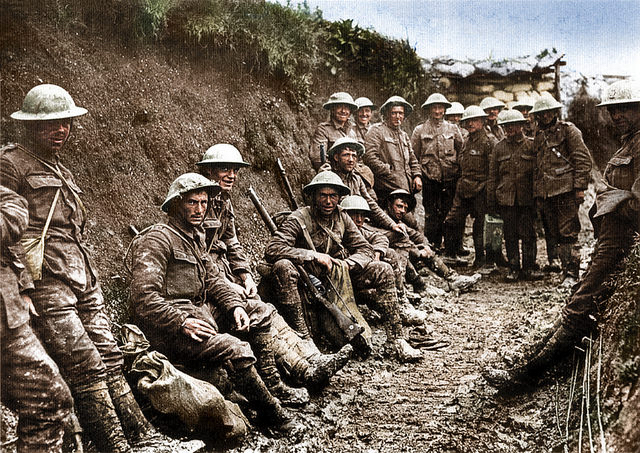“So Erdogan, Aliyez, and Nazarbayez are on a boat …” It reads like the set up to a joke, but all three men – the leaders of Turkey, Azerbaijan, and Kazakhstan – did meet on board the Turkish presidential yacht MV Savarona last week. President Recep Tayyip Erdoğan used an Organization of Islamic Cooperation (OIC) summit as occasion to again show off the luxurious vessel, originally presented to President Mustafa Kemal Ataturk in 1938.
Yet some in the press are assailing Erdogan for further remodeling the ship beyond its 2013-14 refit. The stern has now been rebuilt, and this is recent change since photos from 2015, when she returned to full service, still show her with her original decking there.
In terms of Erdogan-related scandals, this is likely to rank low in the long run. At least in comparison to other incidents involving judicial purges, nepotistic contract bids, illegal arms transfers, and the seizure of newspapers by the state for reporting on said illegal arms transfers. To his detractors, Erdogan’s action here is just further evidence of his gaudy tastes, on display in his “neo-Seljuk” presidential palace and “neo-Ottoman” diplomatic pageantry. But Turkish newspaper Sözcü put the episode in its proper context by comparing this faux pas to the fable of the boiling frogs. That is, in light of gradual and controversial changes made to Istanbul, Ankara or other Turkish cities’ skylines and public spaces in this era of AKP rule, the Savarona refit is just the latest degree by which the slow boil has grown hotter.
Erdogan’s undertaking defies tradition, but what is that tradition? As it has transpired, “tradition” for the Savarona includes years of proud service but also a decade of willful neglect and then, following her first renovation in the 1980s, several years plagued by scandal before the state once more involved itself in the vessel’s fate. And it then played up Ataturk’s legacy to the hilt only to start dismantling parts of it – quite literally – from the aft end forward.
Turkey originally purchased the Savarona, named for a rare black swan, from an American socialite in 1938 for US$1 million, or US$16.5 million today. At the time, she held the title of “the largest private yacht in the world.” She even possessed a full Turkish bath crafted from 65 tons of marble. Ataturk was quite pleased to have acquired the vessel: the German government had also envisioned purchasing her as a state yacht, but the Nazis failed to acquire her.
Unfortunately for Ataturk, the yacht’s noisome steam boilers and his poor health meant that he had little time to enjoy the vessel before his death that same year. The Turkish Navy even had to run cables from one of their submarines to power the ship’s electrical systems so that the boilers would not disturb the ill president. Ironically, one of the reasons the Turkish government says they purchased the ship was Ataturk’s desire to replace the old state yacht Ertugrul, built for the Ottoman sultans’ use and in service up until 1937, with a newer, steam-boilered one.
Then, like many beloved national treasures, the Savarona was repurposed, neglected, and privatized. That the ship lasted long enough to be returned to presidential livery was a small miracle. None of Ataturk’s successors showed interest in his beloved yacht. Though, at least the “republican yacht” was deemed worth preserving.
The Ertugrul was not so lucky; this imperial relic was withdrawn from service in 1937 and scrapped in 1960. And while the Savarona was converted into a training ship for the navy in 1951, she was nearly destroyed by fire in 1979. Left derelict and swarming with rats, she too was on the verge of being scrapped before the tycoon Kahraman Sadikoglu saved her from the breakers in 1989. He effectively rebuilt the hulk, bringing in exterminators, famous designers, and replacing decaying furnishings and decking. These renovations came to US$30 million, more than what the government had originally paid for her.
Mr. Sadikoglu, who preserved Ataturk’s stateroom for public viewing, hoped to turn a profit off of the Savarona by chartering her out to celebrities – at around US$350,000 for a week’s cruise. Quite a few A-listers paid up for a chance to stay in one of her staterooms. But by the 2000s, the Savarona had acquired a reputation as a sex party boat under the thumb of a human trafficking organization with deep-pocketed international clients.
Police raided the vessel one night in 2010 and reported they had uncovered an international prostitution ring with close ties to the ruling party of Kazakhstan, though most of the people detained that night were acquitted in 2011, or never went to trial at all. The yacht suffered further indignity in 2012 when it was linked to a French investigation involving the late Libyan politician Mutassim Gadhafi. This bad publicity, plus rumors that Mr. Sadikoglu was thinking of selling the yacht to a Russian consortium, spelled the end of his contract. Though she was still available for private charters as late as 2013, the government revoked the lease that would have originally kept her in this line of work until 2038.
Despite its controversial renovations, the yacht has never been so seaworthy and efficiently sailed at any time as it is now – its crew complement at the time of its 1931 launch was 100; now it is closer to 30. And since it was brought up to code, it has become a monument for the Kemalist faithful. According to The New York Times, Ataturk’s stateroom saw 3,000 visitors on the anniversary of his death in 2000. The sheet stains he left behind in his convalescence aboard the yacht are said to be preserved for posterity, even though he spent only six weeks on board before he went ashore for the last time and died.
Even compared to other maritime matters in Turkey, it is a minor episode. Right now there is the matter of the coast guard forcing back refugees, the humanitarian crisis unfolding once more on the quais at Smyrna (now Izmir), or the alleged sale of merchant vessels to the Russian Navy for use in its “Syrian Express” sealift. But the case of the Savarona is not insignificant just because it lacks national security implications. It is illustrative of the changes taking place in the shape and character of the Turkish polis itself, the issues of land reclamation, highway rerouting, park use, and mosque construction Sözcü described as slow boils of Turkey’s urban spaces, Istanbul’s in particular.
Nothing is sacred anymore, even hallowed Kemalist spaces like the MV Savarona, and that is something many are still coming to grips with. Turkey still maintains an ambiguous relationship with Ataturk’s legacy. And that includes his yacht.
Photograph courtesy of Ali Tekay. Published under a Creative Commons license.





